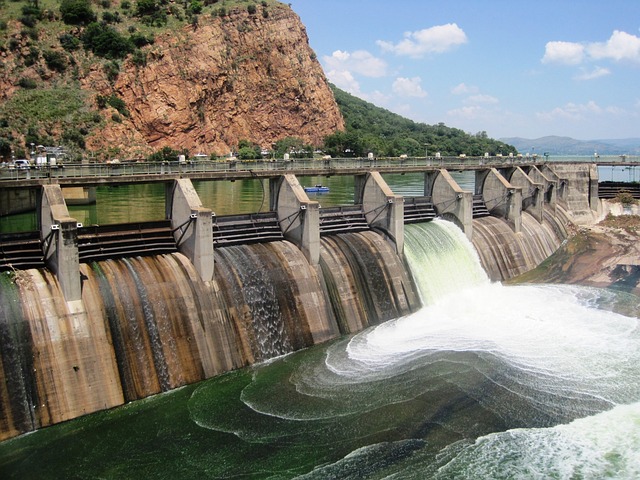3 Key Takeaways:
1. Advanced Technology in Dam Management:
The study highlights the use of advanced technology, specifically artificial intelligence (AI) and deep learning techniques, in dam management. The research team, led by Professor Jonghun Kam and PhD candidate Eunmi Lee, employed the Gated Recurrent Unit (GRU) model to predict dam operational patterns. This showcases the potential of AI to enhance traditional methods and address challenges posed by climate-related incidents such as unexpected typhoons and droughts.
2. Effective Decision-Making in Dam Operations:
The study not only focused on predicting dam water levels but also delved into understanding the decision-making processes of the AI models. By analyzing scenarios and adjusting input variables, the team demonstrated the model's ability to differentiate between the unique operational nuances of different dams. This suggests that AI-based models can effectively contribute to decision-making in dam operations, providing valuable insights for future management strategies.
3. Insights for Future Water Efficiency:
The research's overarching goal is to contribute to a deeper understanding of dam operations and enhance their efficiency. The findings, with an efficiency index exceeding 0.9, offer insights into the impact of various factors, such as precipitation and inflow, on dam water levels. The hope is that this knowledge will contribute to more effective dam management in the face of climate challenges, ultimately reducing the risk of damages like the one experienced in August 2020 near the Seomjin River in Korea.

AI's Game-Changing Role in Dam Management
In August 2020, a dam near the Seomjin River in Korea suffered damages exceeding 100 billion won (USD 76 million) due to overflow during a water release. The incident was connected to keeping the dam's water level six meters higher than normal. Could this have been avoided with better dam management?
A research team led by Professor Jonghun Kam and PhD candidate Eunmi Lee from Pohang University of Science and Technology (POSTECH) explored this question and shared their insights in the Journal of Hydrology. They used advanced deep learning techniques to examine how dams operate and to see if predictive methods could have made a difference.
Korea heavily relies on dams, especially during the summer when precipitation is at its peak. However, the increasing global climate crisis has brought about unexpected challenges like typhoons and droughts, making dam operations more complex.
In response, the research team aimed to go beyond traditional methods. They wanted to tap into the power of artificial intelligence (AI) by creating a model trained on extensive big data.
Their focus was on developing an AI model that could predict how dams in the Seomjin River basin, including the Seomjin River Dam, Juam Dam, and Juam Control Dam, operate. They also wanted to understand how the AI models make decisions.
Their goal was to create a scenario outlining a method to forecast dam water levels. Using the Gated Recurrent Unit (GRU) model, a deep learning algorithm, the team trained it with data from 2002 to 2021 from dams along the Seomjin River.
The model used precipitation, inflow, and outflow data as inputs, while the hourly dam levels served as outputs. The analysis showed impressive accuracy, with an efficiency index exceeding 0.9.
To validate their model further, the team ran scenarios by adjusting inputs by -40%, -20%, +20%, and 40% for each variable. They discovered that changes in precipitation had minimal impact on dam water levels, but variations in inflow significantly influenced the levels.
Crucially, the team found that identical changes in outflow resulted in different water levels at different dams. This suggested that the GRU model successfully captured the unique operational characteristics of each dam.
Professor Jonghun Kam explained, "We went beyond predicting dam operation patterns to evaluate their effectiveness using AI models. We introduced a method aimed at understanding the decision-making process of AI-based models determining dam water levels." He added, "Our hope is that this insight will deepen our understanding of dam operations and improve their efficiency in the future."
Learning from China's Experience to Enhance Climate Resilience in Korea
Drawing parallels with dam management in China, where the scale and complexity of dam infrastructure are substantial, presents an intriguing avenue for further exploration. The challenges faced by Korea, such as the unpredictability of weather patterns and the increased frequency of extreme climate events, are not unique to the region. Leveraging insights from China's experience in employing advanced technologies, including AI, for dam operations could provide valuable lessons and potential solutions. Collaborative efforts and knowledge exchange between researchers and practitioners in Korea and China may foster a comprehensive understanding of effective dam management strategies, ensuring the resilience of such critical infrastructure in the face of evolving climate conditions. As both nations grapple with the impacts of climate change, shared learnings could contribute to a global effort in fortifying dam resilience and mitigating the risks associated with water-related disasters.
